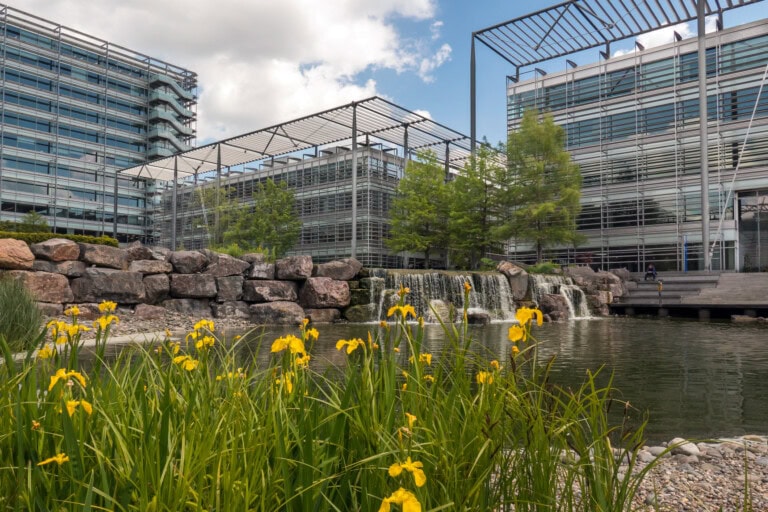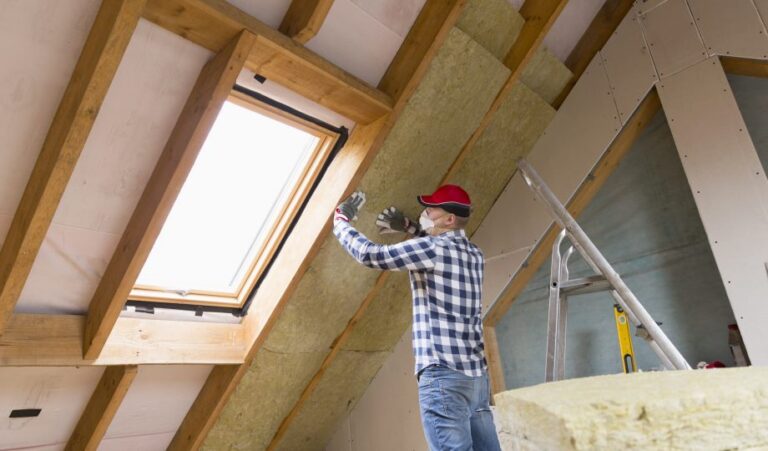Navigating the challenges around hard-to-recycle materials

Moving towards a circular economy is critical to prevent the overextraction of resources and consequential damage to our natural systems, as well as the amount of valuable resource being wasted. Whilst prevention, minimisation and reuse should be the first priorities in achieving a circular economy, recycling is still an important requirement to keep materials in use and minimise virgin material extraction. However, a major challenge lies in the difficulty of recycling commonly used materials such as glass, concrete, and plasterboard, which are hard-to-recycle. In fact, the second-hand market struggles against the efficiency of global supply chains with fixed specifications and prices, preventing progress on circularity of materials, as identified by UKGBC’s Circular Economy Forum. Progress towards a more circular economy can be accelerated if we are able to identify and tackle the challenges around hard-to-recycle materials.
UKGBC therefore called upon some of the leading research and academic experts on hard-to-recycle materials as well as industry members from the UK, to share insights and identify gaps at its latest Academic Research Forum. This write-up summarises some of the key discussion points and the four main insights to progress towards circularity of hard-to-recycle-materials obtained from this session.
Maximising the value of waste
Recycling rates of construction and demolition (C&D) waste overall in the UK are very high, however this is misleading as often this is achieved through downcycling, often via backfilling. This breaches the circular economy principle of keeping materials in use at their highest value for as long as possible. Juan Ferriz-Papi from School of Science, Engineering and Environment at University of Salford discussed the importance of improving the value of our waste. Through a collaborative project they looked at ways in which mixed C&D waste can be recycled for different purposes, including using it in concrete blocks for sea walls. To avoid downcycling, the research highlighted the importance of classification and prediction models to help identify higher value use cases. Despite challenges around limited investment capacity for SME’s to scale this solution, and the requirement for new technologies (around automation, classification and treatment), the research found that incorporating mixed aggregates from mixed C&D waste can be a valid application.
A barrier to maximizing the value of waste is that a large portion of C&D waste is not effectively separated at a granular enough level. This can be costly to achieve and the mixing can also result in contamination, limiting or preventing the recycling of that material. Careful deconstruction of buildings over demolition is one way to reduce contamination, but in many cases this is not possible and they get crushed down together. A further segregation after crushing would help reduce these impurities, but is costly. The implementation of other solutions, like separation by gravity or automated solutions can help with this segregation, reduce the level of impurities and increase the recycled aggregate quality. Another solution is frequent collection in order to keep container size down making space for higher number of containers for on-site C&D waste separation. Skipping all these challenges would be finding ways to recover waste on site and use it for the new building and installing small-scale plants for waste treatment on-site. This would reduce transport and offsite treatment requirements and allow for better traceability of waste.
Business and government collaboration
According to a research project “Enabling business model innovation for sustainability in the UK flat glass sector” by Luis Torres from Nottingham University Business School, the barriers around hard-to-recycle materials are not technological, they are more systemic and require organisational advocacy to address. Luis’ research calls for increased collaboration and co-regulation between business and government, breaking down the existing siloed thinking. Government policy serves only as the starting point for the successful recovery of flat glass waste. However, if the intention is to move glass waste further up the waste hierarchy and into recycling, it is likely that a combination of policy instruments will be required to drive this. Smart policy design in this context implies the use of a combination of government-driven policies and private self-regulation.
Supply chain collaboration
Supply chain collaboration is critical in achieving the circularity of hard to recycle materials. There is a lack of supply chain integration, as found by Luis’ research, and an enhanced benefit only seen through collaboration, as Sofia Steffenoni, Founder and Director of Materials Assemble highlighted. Materials Assemble have performed extensive research to find a facility to collaborate with them on their flat glass recycling research. After reaching out to almost every glass recycling facility they were able to find a partner that was able to delaminate glass without contamination. They also found partners that were able to dismantle the window without contamination, transport them to a facility and tell them the quality of the glass they could produce. This collaboration enabled experimentation, leading to a new materials, including recycled glass fused at a lower temperature and insulation made from 100% recycled glass.
This collaborative approach was also used in the development of a non-cooked ceramic tile, developed by recycling gypsum from ceramic casting moulds. Producing a new building material at scale can take years to get up and running as well as high upfront costs, so the team looked at ways to ensure any process was compatible with current ceramic tile manufacturers.
Fostering collaboration has been found best to work through open stakeholder discussions, rather than operation in silos. For example, part of Luis’ research process showed that when stakeholders are interviewed separately there is a tendency to identify the same challenges but different responsible parties. Bringing them together through a workshop discouraged this and meant they could instead focus on finding solutions, collaboratively. Within and between industries collaboration is fundamental to drive transformative change. Industry initiatives can be initiated by one industry (e.g., glass manufacturing), but it should include collaboration with all relevant industries (e.g., construction, demolition, renovation, recycling, glazing). The reason behind this is the technical, logistical, and infrastructural challenges of dismantling, collecting, and sorting flat glass from demolition and renovation sites.
Incentives
Some materials are not recycled despite the technology being available. A challenge to this is a lack of infrastructure, both in terms of the quantity and the location. However in order to increase the investment in infrastructure the right incentives need to be in place to make it viable.
Lack of incentives for recycling certain materials was also highlighted as a challenge through Luis’ research. Luis found that the current regulatory framework does not provide incentives for the recycling of flat glass, enhanced by no obligation to separate flat glass during demolition and renovation work. As consequence, and for example, it is estimated that flat glass products in the UK contains no more than 1% of post-consumer flat glass, being cheaper to send it to landfill than collect for reprocessing (landfill tax was 3.25 per tonne in 2023 for flat glass). Various ideas exist to address this, including extended producer responsibility, introducing a tax on non-recyclable materials, reducing VAT on materials made of reused or recycled materials, introducing targets for the use of reused or recycled materials on projects. Further recommendations can be found in UKGBC’s Circular Economy Policy Asks.
Experts at the UKGBC Academic Research Forum highlighted challenges and promising solutions in addressing hard-to-recycle materials. Collaboration, innovation, and a holistic approach that transcends individual sectors and silos emerge are key to navigating some of these challenges, as well as effective policy, co-created with industry. Continuing to build demand, infrastructure and avenues for communication and collaboration around recycling materials will hopefully move us in the right direction towards a more circular built environment.
Related
Storms, climate change and how we make our cities resilient

Sustainable Construction for the Sustainable Development Goals

Fixing the Competency Gap: Moving Beyond Qualifications in Domestic Retrofit

UKGBC Members visit Coal House in Cardiff



